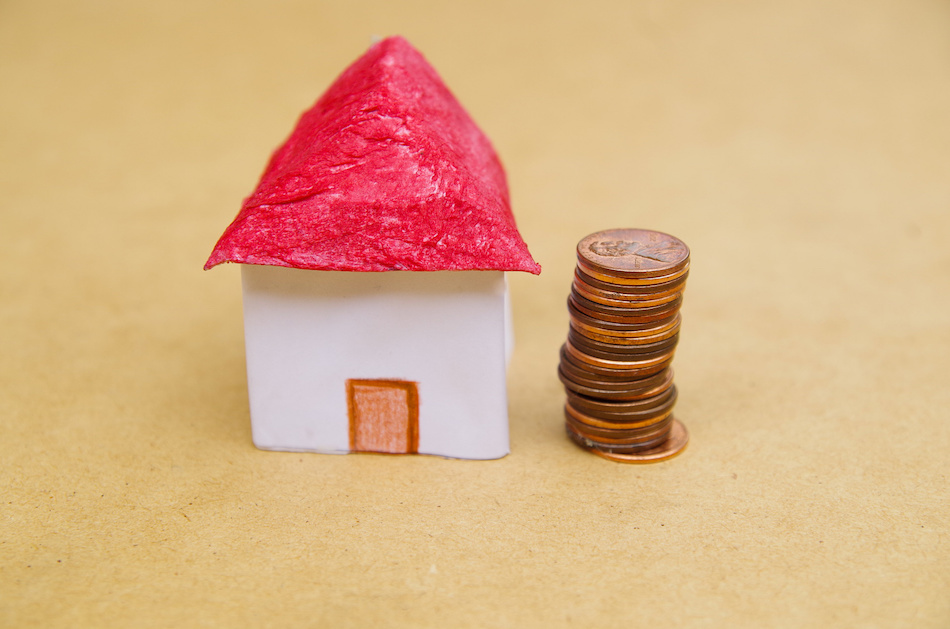 The average homebuyer rarely pays the full price for a home outright without working with a lender to secure a mortgage. However, whether is buyer is purchasing their first fixer-upper or an upgraded luxury estate, some money must be paid or put down. The down payment simply is a portion of the purchase price of a home, and it's typically expressed as a percentage. The remainder of the payment to the seller comes from the mortgage secured by the homebuyer.
The average homebuyer rarely pays the full price for a home outright without working with a lender to secure a mortgage. However, whether is buyer is purchasing their first fixer-upper or an upgraded luxury estate, some money must be paid or put down. The down payment simply is a portion of the purchase price of a home, and it's typically expressed as a percentage. The remainder of the payment to the seller comes from the mortgage secured by the homebuyer.
How Much Do You Need for a Home Down Payment?
For many years, prospective homebuyers were told they needed to have a 20 percent down payment when purchasing a property. According to the National Association of REALTORS® (NAR) and a 2017 Aspiring Home Buyers Profile report, 39 percent of non-owners say they believe they need more than 20 percent for a down payment on a home, while 26 percent believe they need 15 to 20 percent, and 22 percent of this same group state they need a down payment of 10 to 14 percent to purchase a home.
But how much is really needed?
The same 2017 Aspiring Home Buyers Profile report revealed that the average down payment for purchasing a home with a mortgage was 11 percent in 2016. That's significantly lower than the 20 percent rule that many new homebuyers think they have to follow. However, every home purchase is an individualized event with multiple factors contributing to how much of a down payment a buyer may need.
What Contributes to a Down Payment Amount?
Whether you're a first time homebuyer or not, there always will be several factors to consider when making a down payment. These include but are not limited to:
- Personal financial situation
- Debt-to-income ratio
- Price of the home
- Possibility of repairs or renovations to the home
- How long you plan to live in the home
Depending on the type of loan, a homebuyer may required to provide a certain percentage for their down payment. Bankrate reports that most mortgage lenders require at least a down payment of 3 percent, while FHA (Federal Housing Administration) loans need a down payment of 3.5 percent. While it may be possible to make a lower down payment, be aware that a bank or lender may charge a fee for that smaller number. In addition, some lenders require mortgage insurance for down payments that are less than 20 percent.
If the buyer knows a certain amount of money will be spent on repairs or renovations immediately after taking possession of the home, be it in Allenwood or elsewhere, then it can be beneficial to work out a lower a down payment number. The less cash spent on the down payment means more available for repair and renovation costs.
Down Payment Versus Earnest Money
The earnest money is a deposit that tells the seller you're committed to buying the property. Most sellers won't accept an offer on their home without a deposit of earnest money. The earnest money amount varies by sale and factors such as local and state policies/limitation and the amount the buyer is willing to place down. While the earnest money is not a down payment on the house, it can be added to the down payment once an agreement between the seller and buyer is reached. A professional real estate agent can be helpful walking buyers (and sellers) through this part of the home buying process.
In the end, the amount of money a homebuyer puts down when purchasing a property will vary. A first-time homebuyer in the earlier stages of life may not have built up a savings that allows for a 20 percent down payment, while empty nesters looking to downsize may be able to put down as much as 60 or 75 percent of the purchase price. The down payment amount is as individual as each buyer.

Leave A Comment